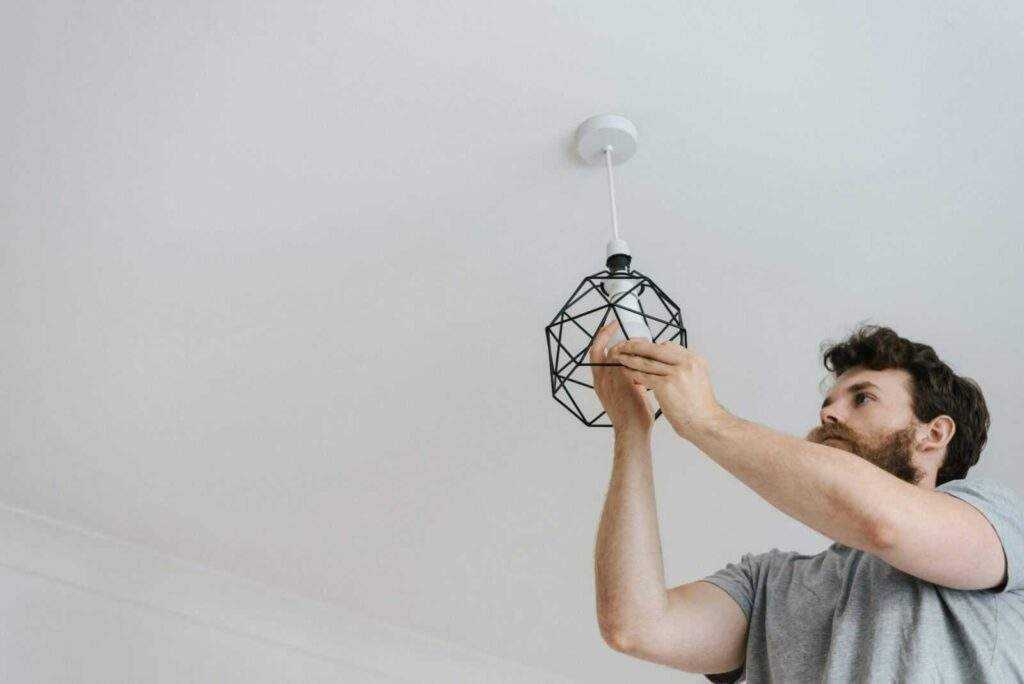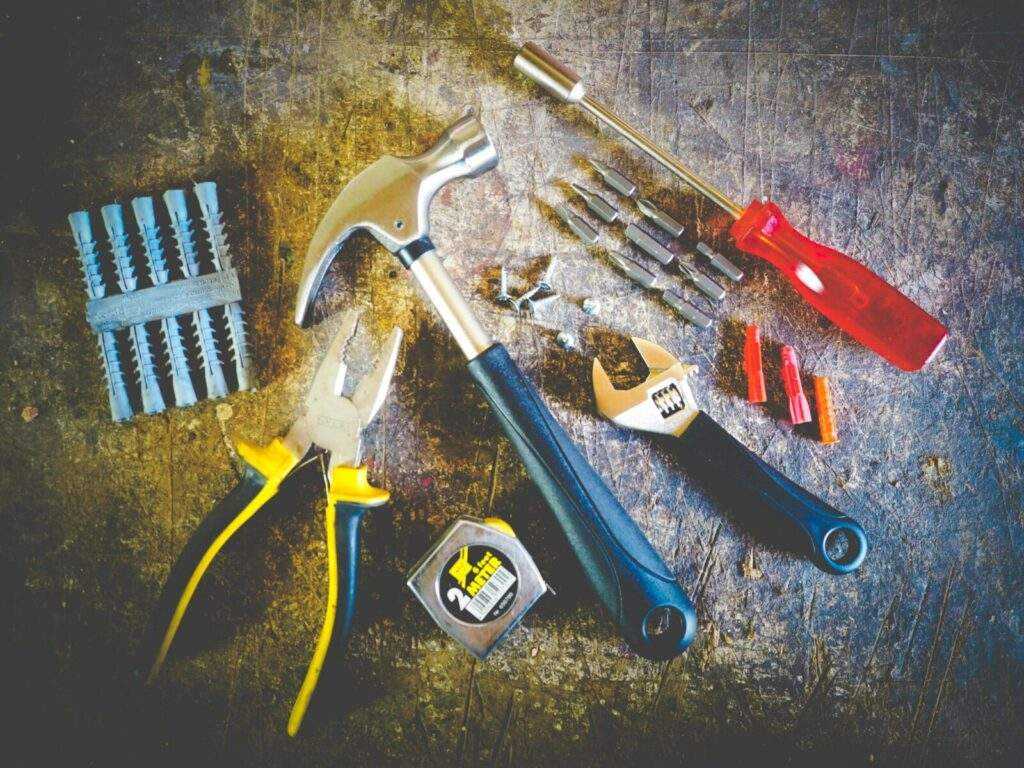The Power of Repair: Fix It, Don’t Ditch It!

ver stared at a broken appliance or a piece of beloved furniture and sighed, ready to send it off to the landfill? Hold on a second! Before you hit “add to cart” on a replacement, there’s a superhero within you waiting to emerge: the mighty Repair Warrior!
In today’s fast-paced world, it’s easy to get caught in a cycle of disposables. But what if there was a better way? “The Power of Repair: Fix It, Don’t Ditch It!” is your empowering guide to becoming a champion of sustainability and saving money in the process. By equipping you with the knowledge and confidence to tackle everyday repairs, we’ll help you transform from a frustrated consumer into a resourceful fixer-upper.
This guide isn’t just about saving a few bucks (although let’s be honest, who doesn’t love that?). It’s about empowering you to take control, develop valuable skills, and breathe new life into the things you love. Imagine the satisfaction of conquering a plumbing leak, reviving a favorite chair, or extending the life of your trusty toaster. It’s a win-win for your wallet, the environment, and your sense of accomplishment!
So, grab your toolbox (or maybe just a screwdriver for now), and get ready to embark on a journey of empowerment and resourcefulness. We’ll equip you with the knowledge to tackle basic repairs, troubleshoot common problems, and discover the joy of giving your possessions a second chance. Let’s break the cycle of disposables and embrace the power of repair!
Embracing the Repair Mentality
In recent years, there has been a notable shift towards DIY repairs and responsible product disposal. This growing trend is not merely a fleeting fad; it is rooted in both environmental and financial pragmatism. Repairing items, rather than hastily discarding them, offers numerous advantages that extend far beyond immediate cost savings. It fosters sustainable living and contributes positively to reducing waste, making it a crucial step toward a more eco-conscious lifestyle.
From appliance repair to upcycling furniture, individuals are discovering the empowerment and satisfaction that comes with fixing things themselves. DIY home repair projects are more accessible than ever, thanks to a plethora of online resources and communities dedicated to sharing repair tools for beginners and basic appliance repair tips. This movement encourages people to take control of their belongings and breathe new life into items that might otherwise end up in landfills.
Moreover, the financial benefits of repairing cannot be overstated. In an era where consumerism often drives the cycle of purchase and disposal, learning how to repair common household items can significantly reduce expenses. Whether it’s learning how to fix clothes or tackling easy repairs around the house, these skills can lead to substantial savings and even an appreciation for the craftsmanship involved in everyday objects.
This blog post will delve into various aspects of the repair mentality, from practical advice on how to repair specific items to the broader implications of embracing this approach. By the end, you’ll be equipped with sustainable living tips and inspired to take on your own DIY repair projects, ultimately contributing to a more sustainable and financially prudent lifestyle. Let’s explore the power of repair and the myriad ways it can transform our approach to everyday challenges.

How to Fix a Leaky Faucet
Repairing a leaky faucet is a straightforward task that can save you money and prevent water waste. To begin, gather the necessary tools: an adjustable wrench, screwdrivers, plumber’s tape, and replacement parts like washers or O-rings, depending on your faucet type. Identifying the root cause of the leak is crucial. Common causes include worn-out washers, O-rings, or corroded valve seats.
First, turn off the water supply to avoid any mess. Locate the shutoff valves under the sink and turn them clockwise. Plug the drain to prevent small parts from falling in. Next, disassemble the faucet handle by removing the decorative cap and unscrewing the handle. Use the wrench to loosen the packing nut, then remove the stem, which may reveal a washer or O-ring that needs replacing.
Inspect the washer or O-ring for signs of wear and tear. If damaged, replace it with one of the same size and shape. Reassemble the faucet by reversing the disassembly steps. Ensure all parts are tightly secured but avoid overtightening, as this can cause further damage. Turn the water supply back on and test the faucet to confirm the leak is fixed.
To prevent future leaks, perform regular maintenance on your faucets. Clean aerators to remove mineral build-up and inspect washers and O-rings periodically for signs of wear. Using plumber’s tape on threaded connections can also help create a watertight seal. By incorporating these sustainable living tips, you can extend the lifespan of your faucets and reduce the need for frequent repairs.
Undertaking DIY home repairs like fixing a leaky faucet not only helps save money on repairs but also empowers you to handle common household repairs confidently. With the right repair tools for beginners and a bit of patience, anyone can master basic appliance repair, contributing to a more sustainable lifestyle.
Repair a Cracked Phone Screen
Repairing a cracked phone screen can seem like a daunting task, but with the right knowledge and tools, it is a manageable DIY project. There are several options available for fixing a cracked phone screen, ranging from professional repair services to DIY repair kits. Professional services, while convenient, can be costly. On the other hand, opting for a DIY repair can save money and provide a sense of accomplishment.
For those interested in a DIY approach, it is crucial to gather the necessary tools and follow safety precautions. Essential tools include a small Phillips-head screwdriver, a plastic prying tool, a suction cup, tweezers, and a replacement screen compatible with your phone model. Additionally, having a clean, well-lit workspace is important to avoid losing small components and ensure precision during the repair process.
Before starting the repair, safety precautions must be taken. Power off the phone and remove the SIM card and any external memory cards. Use an anti-static wrist strap to prevent static electricity from damaging internal components. Handle the phone and its parts with care to avoid further damage.
The step-by-step guide to replacing a cracked phone screen includes the following:
1. Remove the back cover and battery if possible. Some phones have non-removable batteries, in which case, proceed to the next step.
2. Use the small Phillips-head screwdriver to remove screws securing the phone casing. Keep the screws organized to ensure they are reassembled correctly.
3. Gently use the plastic prying tool to separate the phone casing. Be careful not to damage the internal components.
4. Disconnect the screen cables using tweezers. Take note of the connections to ensure correct reassembly.
5. Remove the cracked screen and replace it with the new one. Reconnect the screen cables and secure the phone casing with the screws.
6. Reinsert the battery, SIM card, and any external memory cards. Power on the phone to test the new screen.
Repairing a cracked phone screen yourself can be a rewarding experience. Not only does it save money on repairs, but it also promotes sustainable living by extending the life of your device. Embracing DIY home repair projects like this can lead to a greater appreciation for the longevity and functionality of your personal electronics.
Sewing Tips for Beginners
Sewing is an invaluable skill that not only empowers individuals to perform basic repairs on clothing and other fabric items but also opens up a world of creative possibilities. For those new to sewing, the journey begins with understanding essential tools and materials, mastering basic stitches, and undertaking simple projects that build confidence and competence.
To get started, assembling a basic sewing kit is crucial. Essential tools include a good pair of fabric scissors, a set of needles, a variety of threads, measuring tape, fabric pins, and a seam ripper for those inevitable mistakes. These items form the backbone of any sewing endeavor, whether it’s a quick clothing repair or a more intricate DIY project.
Learning basic stitches is the next step. The running stitch, backstitch, and whipstitch are foundational techniques that are easy to master and versatile enough for a range of repairs and projects. The running stitch, for instance, is excellent for temporary seams and basting, while the backstitch provides a strong, durable seam for garment repairs. The whipstitch is ideal for hemming and closing seams, making it a handy addition to any beginner’s repertoire.
Simple projects are an excellent way to practice these stitches and build sewing confidence. Beginners might start with hemming pants, repairing a torn seam, or creating a basic tote bag. These projects not only reinforce sewing skills but also offer practical applications for everyday life. Fix it, don’t ditch it becomes a mantra as one realizes the potential for extending the life of clothing and household items through sewing.
Additionally, sewing aligns with sustainable living tips by promoting the upcycling of old clothes and fabrics into new creations. By learning how to repair and repurpose items, individuals contribute to reducing waste and fostering a more sustainable lifestyle. Whether it’s basic appliance repair, furniture repair, or how to fix clothes, sewing is a skill that offers both practical and creative benefits.
In essence, sewing is a gateway to easy repairs that save money and promote sustainability. With the right tools, basic stitches, and simple projects, anyone can embark on this rewarding journey of DIY home repair and creative expression.
Upcycle Old Clothes
Transforming old clothes into new, fashionable items through upcycling not only fosters creativity but also contributes significantly to sustainable living. By choosing to upcycle rather than discard, you can reduce waste and breathe new life into your wardrobe. This approach aligns with the growing trend of DIY home repair and sustainable living tips, encouraging everyone to adopt more environmentally friendly habits.
One of the easiest ways to upcycle old clothes is by implementing basic sewing techniques. For instance, an oversized t-shirt can be turned into a stylish tank top with just a few cuts and stitches. Adding patches or embroidery to denim jackets or jeans can also provide a fresh, personalized look. If sewing isn’t your forte, fabric glue can be a great alternative to attach embellishments or mend tears.
Creative ideas for upcycling are abundant. Transforming old scarves into vibrant headbands or creating tote bags from worn-out jeans are just a couple of examples. You can also repurpose old sweaters into cozy pillow covers or mittens. The possibilities are endless and only limited by your imagination. These DIY repair projects not only help save money on repairs but also allow for unique customization that store-bought items can’t offer.
Upcycling old clothes is more than just a fashionable endeavor; it is a proactive step towards reducing the environmental impact of fast fashion. The textile industry is one of the most polluting industries globally, and by choosing to upcycle, you are directly contributing to the reduction of waste and the conservation of resources. Additionally, the repair tools for beginners are often simple and inexpensive, making this an accessible and practical option for anyone looking to adopt more sustainable habits.
Embracing upcycling empowers individuals to take control of their wardrobe and contributes to a more sustainable future. The next time you consider discarding an old piece of clothing, remember the power of repair: fix it, don’t ditch it!

Affordable Appliance Repair
One of the most effective ways to embrace sustainable living is by repairing appliances rather than discarding them. By diagnosing and fixing common household issues, you can significantly reduce your environmental footprint and save money. For instance, understanding the basics of appliance repair can help you determine whether a malfunctioning device needs a simple fix or professional intervention.
Start by diagnosing the problem. Many appliance issues are straightforward to identify. For example, if your refrigerator is not cooling properly, check the condenser coils for dust buildup. Similarly, a washing machine that doesn’t drain may have a clogged pump filter. Various online resources and repair guides can assist in identifying these common problems.
Once you’ve diagnosed the issue, sourcing affordable replacement parts is essential. Numerous online retailers offer reasonably priced parts for most household appliances. Before purchasing, compare prices across different platforms to ensure you’re getting the best deal. Moreover, consider visiting local repair shops or second-hand stores; they often have parts at a fraction of the cost of new ones.
While many repairs can be handled with basic tools and minimal expertise, there are instances where calling a professional is prudent. If the repair involves complex electrical components or if you’re unsure about the safety implications, seeking professional help is advisable. However, by handling minor repairs on your own, you can reduce the frequency and expense of professional services.
The cost savings from DIY appliance repair can be substantial. Instead of spending hundreds of dollars on new appliances, minor fixes can often restore functionality for a fraction of the cost. Additionally, repairing appliances contributes to environmental sustainability by reducing waste and conserving resources.
By integrating these appliance repair tips into your routine, you can enjoy the benefits of cost savings and contribute to a more sustainable lifestyle. Embracing the fix-it-don’t-ditch-it mindset not only preserves your budget but also promotes a greener, more resourceful way of living.
DIY Furniture Restoration Projects
Restoring old or damaged furniture can be a rewarding endeavor that not only saves money but also contributes to sustainable living. Whether you are dealing with a wobbly chair, a scratched table, or an old dresser in need of a makeover, learning how to repair and upcycle furniture is a valuable skill. This guide will walk you through essential tools, materials, and techniques to breathe new life into your beloved pieces.
First and foremost, having the right repair tools for beginners is crucial. Basic tools include screwdrivers, hammers, pliers, and a good quality wood glue. For more advanced projects, you might need a sander, clamps, and a variety of paint brushes. Always start by assessing the damage and determining what needs fixing. For instance, a loose joint in a chair can often be secured with wood glue and clamps, while a scratched table might need sanding and a fresh coat of varnish.
Next, gather the necessary materials. For wooden furniture, this usually includes wood filler, sandpaper, paint or stain, and sealant. For upholstered pieces, you may need fabric, a staple gun, and foam padding. Make sure to choose materials that are durable and match the style of your furniture. Opting for eco-friendly products can further enhance the sustainability of your project.
The techniques you use will depend on the type of furniture and the extent of the damage. For minor repairs, such as fixing a wobbly leg or touching up scratches, simple methods can be employed. Sanding down rough patches and reapplying finish or paint can make a significant difference. More extensive projects, like reupholstering a chair or refinishing a dresser, require more time and patience. Strip old finishes carefully, repair any structural damage, and apply new paint or stain in thin, even coats.
Finally, the satisfaction of completing a DIY furniture restoration project cannot be overstated. Not only do you gain a sense of accomplishment, but you also contribute to sustainable living by reducing waste and conserving resources. By choosing to fix it, don’t ditch it, you transform old furniture into beautiful, functional pieces that can be enjoyed for years to come.
How to Replace a Car Battery
Replacing a car battery is a fundamental skill that can significantly enhance your self-reliance and save money on repairs. Understanding how to perform this basic maintenance task can extend the life of your vehicle and prevent unexpected breakdowns. Here’s a step-by-step guide to help you replace your car battery safely and effectively.
Step 1: Choosing the Right Battery
Selecting the correct battery for your vehicle is crucial. Consult your car’s manual or visit a reputable auto parts store to find the right battery type and size. Ensure the new battery matches the specifications of your old one in terms of voltage, reserve capacity, and cold cranking amps.
Step 2: Gathering Necessary Tools
Before starting the replacement process, gather the essential tools: a wrench set, gloves, safety glasses, and a battery cleaning solution. These items will help you perform the task efficiently and safely.
Step 3: Safety Precautions
Safety is paramount when working with car batteries. Wear protective gloves and safety glasses to guard against acid spills and sparks. Ensure the car is turned off, the keys are removed, and the parking brake is engaged. Disconnect the negative terminal first to prevent short circuits, followed by the positive terminal.
Step 4: Removing the Old Battery
Carefully remove any clamps or brackets holding the battery in place. Lift the old battery out of the compartment, taking care to avoid spilling battery acid. Use a battery cleaning solution to clean the tray and terminals before installing the new battery.
Step 5: Installing the New Battery
Place the new battery in the tray and secure it with clamps or brackets. Reconnect the positive terminal first, followed by the negative terminal. Ensure both terminals are tightly secured to avoid any connection issues.
Step 6: Final Checks
Double-check all connections and ensure the battery is securely in place. Start the car to verify that the new battery is functioning correctly. Dispose of the old battery properly by taking it to a recycling center or an auto parts store.
Learning how to replace a car battery is an invaluable skill that can save you money on repairs and foster a sense of independence. By mastering this and other basic car maintenance tasks, you can contribute to sustainable living and reduce waste. Equip yourself with the right repair tools for beginners and embrace the benefits of DIY repairs for a more self-reliant lifestyle.
Extend the Life of Your Clothes
Maintaining your wardrobe doesn’t have to be a daunting task. By implementing a few practical steps, you can greatly extend the life of your clothes. Proper washing and drying techniques play a crucial role in preserving fabric integrity. Always sort your clothes by color and fabric type to prevent damage and fading. Use cold water for delicate items and consider air drying to reduce wear and tear caused by machine dryers. Investing in a quality detergent can also make a significant difference.
When it comes to simple mending and repairs, having a basic understanding of how to fix clothes can save you both time and money. Learning to sew on a button or repair a loose hem can breathe new life into an otherwise neglected garment. Keep a small kit of essential repair tools for beginners, such as needles, thread, and fabric glue, on hand for quick fixes.
The environmental and financial benefits of extending the life of clothing are substantial. By focusing on diy repair instead of opting for new purchases, you contribute to sustainable living and reduce textile waste. This not only helps the planet but also keeps more money in your pocket. Upcycle furniture and repurpose old clothes into new items to further embrace eco-friendly practices.
Organizing and storing clothes properly is another key aspect of prolonging their lifespan. Use sturdy hangers to maintain shape and avoid overcrowding your closet to let garments breathe. Fold heavy sweaters to prevent stretching and store delicate fabrics in breathable garment bags. Regularly rotate your wardrobe to ensure all items are worn and appreciated.
By integrating these easy repairs and sustainable living tips into your routine, you can enjoy a longer-lasting wardrobe. Fix it, don’t ditch it, and experience the satisfaction of maintaining your clothing collection while supporting environmental sustainability.

Sustainable Home Improvement Ideas
In today’s world, embracing sustainable home improvement projects is more crucial than ever. These projects not only enhance the functionality and aesthetics of your living space but also significantly reduce your environmental footprint. By focusing on energy efficiency, water conservation, and utilizing recycled or upcycled materials, you can create a more sustainable and cost-effective home.
One of the primary areas to consider is energy efficiency. Simple actions such as sealing drafts, adding insulation, and installing energy-efficient windows can significantly reduce heating and cooling costs. Switching to LED lighting and investing in smart home devices that optimize energy usage are additional steps that can yield substantial savings over time. These upgrades not only cut down on utility bills but also contribute to a lower carbon footprint, making them a win-win for both your wallet and the environment.
Water conservation is another critical aspect of sustainable home improvement. Installing low-flow showerheads and faucets, dual-flush toilets, and rainwater harvesting systems can drastically reduce water usage. Additionally, consider landscaping with drought-resistant plants and using drip irrigation systems to minimize water waste. These measures not only conserve precious resources but also lower water bills, contributing to a more sustainable lifestyle.
Incorporating recycled or upcycled materials into home improvement projects is a creative and effective way to promote sustainability. Upcycling old furniture, for instance, can give new life to pieces that might otherwise end up in a landfill. This not only saves money on repairs but also adds unique character to your home. Recycled materials such as reclaimed wood, recycled glass, and repurposed metal can be used in various projects, from flooring to countertops, enhancing both the look and eco-friendliness of your home.
Embracing these sustainable home improvement ideas not only benefits the environment but also offers long-term financial savings and a healthier living space. By focusing on energy efficiency, water conservation, and upcycling materials, you can make a significant impact and contribute to a more sustainable future.
Tips for Finding Replacement Parts
When it comes to appliance repair, furniture repair, or any DIY home repair project, sourcing the right replacement parts is crucial. Knowing the make and model of the item you’re repairing is the first step. Manufacturers often design parts specific to certain models, so accurate identification ensures compatibility and functionality. This knowledge also enhances your ability to find high-quality parts that will stand the test of time, making your repair efforts more sustainable.
Online platforms are a goldmine for finding replacement parts. Websites like eBay, Amazon, and specialized repair part retailers offer a vast selection of components for various types of repairs. These platforms often provide detailed specifications and user reviews, allowing you to make informed decisions. Additionally, many manufacturer websites have sections dedicated to replacement parts, ensuring that you’re getting components that are a perfect match for your needs.
For those who prefer local shopping, hardware stores and specialized repair shops can be invaluable resources. These stores often have knowledgeable staff who can offer advice on the best parts for your specific repair. They can also provide insights into the necessary repair tools for beginners, making the process less daunting. This hands-on assistance can be particularly helpful when tackling common household repairs or basic appliance repair tasks.
Ensuring compatibility is another critical aspect of sourcing replacement parts. Cross-referencing part numbers and verifying dimensions are essential steps. Many online resources and forums provide compatibility charts and user experiences that can guide you. Quality is equally important; opting for genuine or high-quality third-party parts can significantly prolong the life of your repair, contributing to sustainable living practices.
Incorporating these tips into your repair projects not only helps in executing easy repairs but also in saving money on repairs. By investing time in finding the right parts, you can upcycle furniture, fix clothes, and address a wide range of common household repairs efficiently. This approach not only benefits your wallet but also supports a more sustainable lifestyle.
Common Household Repairs
Understanding how to tackle common household repairs can be immensely beneficial for maintaining your home and saving money. Simple tasks like fixing a running toilet, unclogging a drain, and patching a hole in the wall are within reach for most individuals, even those with minimal experience. Here, we will discuss these repairs and provide basic instructions and tips to help you manage them effectively.
Fixing a Running Toilet
A running toilet can waste a significant amount of water, leading to increased utility bills. To fix it, start by turning off the water supply to the toilet. Next, remove the tank lid and inspect the flapper valve; this is often the culprit. If the flapper is worn or damaged, replace it with a new one. Adjust the chain length connecting the flapper to the flush handle if necessary. Finally, turn the water supply back on and test the toilet to ensure it is no longer running.
Unclogging a Drain
Clogged drains are a common issue in many households. To unclog a drain, begin by using a plunger to try and dislodge the blockage. If this doesn’t work, a drain snake can be more effective. Insert the snake into the drain and twist it to catch and remove the clog. For minor clogs, a mixture of baking soda and vinegar can be poured down the drain, followed by hot water, to break down any build-up. Regular maintenance, such as using drain strainers, can help prevent future clogs.
Patching a Hole in the Wall
Holes in walls, whether from accidental damage or wear and tear, can be unsightly. To repair small holes, apply a patching compound using a putty knife, smoothing the surface evenly. For larger holes, you may need a wall repair patch kit, which includes a mesh patch and compound. Place the mesh over the hole, apply the compound, and smooth it out. Once dry, sand the area until smooth and repaint to match the existing wall color.
Learning these basic appliance repair skills can significantly contribute to sustainable living, as it encourages fixing rather than discarding items. Moreover, having a set of essential repair tools for beginners can make these tasks even easier. By mastering common household repairs, you not only enhance your home’s longevity but also save money on repairs and contribute positively to the environment.
Repair Tools for Beginners
Embarking on the journey of DIY home repair can be both rewarding and economical. The initial step involves assembling a basic toolkit, which lays the foundation for a multitude of projects, from appliance repair to furniture restoration. Understanding the purpose and proper usage of each tool is paramount for successful and safe repairs.
A fundamental toolkit should include a hammer, screwdrivers (both flathead and Phillips), a tape measure, a utility knife, pliers, and an adjustable wrench. The hammer is versatile, useful for driving nails or removing them with its claw. Screwdrivers are indispensable for assembling or disassembling furniture, while the tape measure ensures precision in measurements. A utility knife is essential for cutting materials such as cardboard or fabric during repair tasks, and pliers offer a firm grip for bending or holding objects. The adjustable wrench is particularly useful for tightening or loosening nuts and bolts in basic appliance repair.
Safety is critical when using these tools. Always wear protective gear, such as gloves and safety glasses, to prevent injuries. Ensure that tools are used as intended; for example, using a screwdriver as a chisel can damage the tool and pose safety risks. Regular maintenance of your tools, such as cleaning and oiling, extends their lifespan and ensures optimal performance.
As you gain confidence and experience, gradually expand your toolkit to include specialized items like a power drill, a level, and a set of Allen wrenches. These additions will enable you to tackle more complex projects, enhancing your DIY repair capabilities. Additionally, investing in quality tools, rather than opting for cheaper alternatives, often proves more cost-effective in the long run, as they tend to be more durable and reliable.
Building a well-rounded collection of repair tools is a gradual process. Begin with the essentials, and as you take on varied repair tasks, identify and acquire additional tools tailored to your needs. Proper tool maintenance and safe usage practices not only ensure the success of your DIY projects but also contribute to sustainable living by empowering you to fix it, don’t ditch it.
Fix, Upcycle, Repeat: You’ve Got This!
Congratulations! You’ve officially unlocked the power of repair! By embracing the simple act of fixing what’s broken, you’re not just saving money and reducing waste; you’re becoming an active participant in a more sustainable future.
Remember, even the most daunting repairs can be broken down into manageable steps. Don’t be afraid to start small, with a loose doorknob or a leaky faucet. As you gain confidence, you’ll be surprised at what you can accomplish! The internet is a treasure trove of repair tutorials, and local hardware stores are filled with friendly experts happy to lend a helping hand.
So, the next time you encounter a household mishap, don’t reach for the “replace” button just yet. Channel your inner repair warrior, grab your tools, and embrace the power of fixing it yourself. After all, the satisfaction of a successful repair is a feeling like no other. Now, go forth and conquer those repairs! Remember, you’ve got this!
The Power of Repair: FAQ
This FAQ tackles common questions about DIY repairs, empowering you to become a resourceful fixer-upper and reduce waste in your home.
1. I’m not very handy. Can I still tackle DIY repairs?
Absolutely! Many repairs are surprisingly simple and require basic tools. This guide will focus on beginner-friendly fixes, and online resources offer a wealth of tutorials for even more complex tasks.
2. What are some basic tools I should have on hand?
A screwdriver set, a hammer, adjustable pliers, a tape measure, and a flashlight are a great starting point. As you gain confidence, you can expand your toolkit to address specific repairs.
3. Where can I find repair instructions?
The internet is your friend! Websites, YouTube channels, and even appliance manufacturer websites often provide detailed repair guides.
4. What if I get in over my head with a repair?
Don’t be afraid to call in reinforcements! There’s no shame in reaching out to a professional for more complex repairs. However, you might be surprised at what you can accomplish with a little guidance.
5. Is fixing things always cheaper than replacing them?
Not always, but it can often be! The cost depends on the repair and the item. However, even if the initial cost of repair is similar to replacing the item, consider the environmental impact of keeping something out of the landfill.
6. What are some benefits of repairing things myself?
- Save money: Repairs are often cheaper than replacements.
- Develop skills: You’ll learn valuable DIY skills and become more self-sufficient.
- Reduce waste: You’ll keep usable items out of landfills and contribute to a more sustainable future.
- Sense of accomplishment: Fixing something yourself is incredibly rewarding!
7. Where can I find replacement parts for repairs?
Hardware stores are a great starting point. You can also find parts online or from appliance manufacturer websites.
8. What about safety? Are there any precautions I should take when doing repairs?
Safety first! Always unplug appliances before working on them, and turn off the water supply before plumbing repairs. If you’re unsure about a specific repair, consult a professional.
9. Is repairing electronics a good idea?
It depends on the device and your comfort level. Simple repairs like replacing a phone battery might be doable, while complex repairs might be best left to professionals.
10. I’m inspired! What are some resources to help me on my repair journey?
There are many online resources available! Search for websites and YouTube channels dedicated to DIY repairs and specific appliances or furniture types. You can also find helpful communities and forums where you can ask questions and share your experiences.








